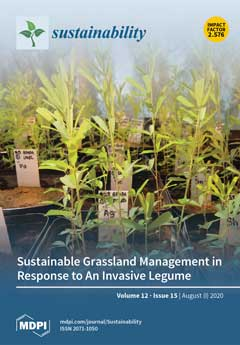The high consumption of water in industries, domestic areas and increasing earth temperature are major hurdles for the optimization of maize yield. Being the third most widely cultivated cereal crop, improvement in maize yield is a big challenge under the limited availability of
[...] Read more.
The high consumption of water in industries, domestic areas and increasing earth temperature are major hurdles for the optimization of maize yield. Being the third most widely cultivated cereal crop, improvement in maize yield is a big challenge under the limited availability of irrigation. As the water requirement for maize cultivation is high, it is time to introduce technologies that can mitigate drought stress and are environmentally friendly. The inoculation of rhizobacteria with ‘1-aminocyclopropane-1-carboxylate deaminase’ (ACCD) can play an imperative role in that regard by decreasing stress ethylene in plants. Biochar (BC) can also alleviate drought stress. Therefore, a field study was conducted, to examine the single and combined application of drought-tolerant plant-growth-promoting rhizobacteria (PGPRs)
Achromobacter xylosoxidans and
Enterobacter cloacae, with 15 Mg ha
−1 of timber waste biochar (TWBC) at normal irrigation = 16 irrigations, mild drought = 14 irrigations and severe drought = 12 irrigation for maize cultivation. A significant improvement in shoot dry weight (28%), 1000-grains weight (19%), grain yield (27%), concentrations of N (43%), P (92%) and K (71%) in grains, rate of photosynthesis (33%), transpiration rate (55%), stomatal conductance (104%), chlorophyll A (33%), chlorophyll B (62%) and total chlorophyll (45%) of maize was noted under drought stress where
E. cloacae + TWBC was applied. Likewise, the application of
A. xylosoxidans + TWBC also significantly enhanced the plant height (24%) and cob length (9%) of maize under drought stress. In conclusion,
E. cloacae is more effective than
A. xylosoxidans, with 15 Mg ha
−1 TWBC to increase maize yield under drought stress, due to the potential of higher ‘1-aminocyclopropane-1-carboxylate’ (ACC)-deaminase synthesis, better nutrient solubilization and indole acetic acid (IAA) production.
Full article





